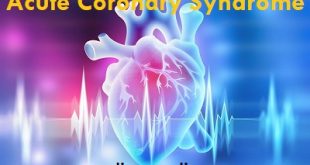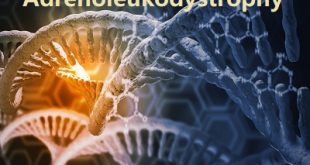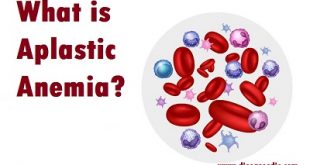Definition
Azoospermia is a medical condition characterized by the absence of sperm in a man’s ejaculate. Sperm, the male reproductive cells, are essential for fertilizing an egg and initiating the process of conception. Azoospermia can be classified into two main types: obstructive and non-obstructive. In obstructive azoospermia, there is a physical blockage that prevents the sperm from reaching the semen. This obstruction can occur in the vas deferens or other parts of the male reproductive tract. Non-obstructive azoospermia, on the other hand, is typically associated with a lack of sperm production in the testes, often due to issues with sperm development or maturation. Azoospermia is a significant factor in male infertility, and its underlying causes can range from genetic factors and hormonal imbalances to infections and environmental influences.
The diagnosis of azoospermia is typically made through a semen analysis, where a sample of semen is examined under a microscope to determine the presence or absence of sperm. While obstructive azoospermia may be treated surgically to address the blockage, non-obstructive azoospermia poses more significant challenges. Assisted reproductive technologies such as in vitro fertilization (IVF) combined with sperm retrieval techniques may be options for couples facing infertility due to azoospermia. It is crucial for individuals experiencing fertility issues to consult with healthcare professionals, including urologists and reproductive specialists, to explore potential causes and treatment options tailored to their specific circumstances.
Epidemiology
The overall incidence of infertility accounts for nearly 15% of all couples. Male azoospermia affects nearly 1% of the male population and about 10 to 15% of all infertile men. At any given time, there are about 600,000 azoospermic men of reproductive age in the US, most of whom will have non-obstructive azoospermia. Azoospermic men are also at increased risk of developing cancer compared to the general population. For example, between 5% and 8% of men with testicular cancer will be azoospermic. The exact incidence is unknown as infertility is not a reportable disease, is usually managed in physicians’ offices, and is probably underreported in developing nations where advanced treatment is either too costly or unavailable.
Pathophysiology of Azoospermia
The psychophysiology of azoospermia refers to the intricate interplay between psychological factors and the physiological processes involved in male reproductive health. The psychological aspects can significantly impact the endocrine system and, subsequently, spermatogenesis the production and maturation of sperm cells within the testes. Stress, anxiety, and depression, for instance, have been linked to disruptions in hormonal balance, particularly elevated levels of cortisol and decreased levels of reproductive hormones like testosterone. This altered hormonal milieu can negatively influence the intricate feedback loops that regulate sperm production, potentially contributing to conditions such as azoospermia.
Conversely, the diagnosis of azoospermia itself can evoke a range of emotional responses, including grief, frustration, and feelings of inadequacy. These psychological factors may further exacerbate hormonal imbalances, creating a cyclic relationship between the mind and body. Stress reduction techniques, counseling, and psychological support can play a crucial role in mitigating the psychophysiological impact of azoospermia. Integrating mental health considerations into the overall approach to managing azoospermia is essential, recognizing that addressing both the physiological and psychological dimensions is key to comprehensive care for individuals and couples facing fertility challenges.
Types of Azoospermia
Azoospermia can be divided into three types which are:
- Obstructive Azoospermia: It is a condition in which there is a production of sperms in the testicles but due to a blockage in the reproductive tract, the sperms cannot exit the body. This blockage can be found in vas deferens, epididymis, or in any other part of the reproductive tract. In this case, you ejaculate and there is semen, but due to the blockage, there is no measurable number of sperms in the semen.
- Nonobstructive Azoospermia: It is a condition in which there is poor or no production of sperms in the testicles. This can be a result of some defects in the structure or functions of the testicles or defect at the level of pituitary in the brain.
- Assisted Reproductive Techniques (ART): Regardless of the type of azoospermia, ART techniques like IVF with intracytoplasmic sperm injection (ICSI) can be used to achieve pregnancy. In ICSI, a single sperm is injected directly into an egg to facilitate fertilization.
What are the symptoms of azoospermia?
This condition does not have specific symptoms only associated with it. The only surefire indication is infertility that the male partner has, which you would notice after trying to get pregnant for a long.
However, some particular reasons cause Azoospermia, and you would see symptoms of these causes occasionally. They are as follows.
- Little or no semen
- Painful urination
- Pain in the pelvic area
- Cloudy urine after you have sex
- Smaller or swollen testicles
- Delayed puberty
- The penis is smaller than normal
- Cannot get erect easily
- Low hair growth near male genitalia
- Bigger breasts
- Reduced sex drive
- Loss of muscular strength
What are the causes?
Common causes for Obstructive Azoospermia are
- Congenital Anomalies: Some men are born with abnormalities in the vas deferens or epididymis, the tubes responsible for transporting sperm from the testicles to the urethra.
- Infections: Sexually transmitted infections, such as gonorrhea or chlamydia, can cause scarring or blockages in the reproductive tract.
- Surgical Complications: Previous surgeries, such as vasectomy or inguinal hernia repair, can lead to obstructions in the reproductive pathway.
- Prostate or Seminal Vesicle Issues: Problems with the prostate gland or seminal vesicles can obstruct the flow of sperm during ejaculation.
- Ejaculatory Duct Obstruction: Blockages in the ejaculatory ducts, which carry sperm and semen from the seminal vesicles to the urethra, can lead to obstructive azoospermia.
Common causes for Non-obstructive Azoospermia are
- Genetic Factors: Some genetic conditions can disrupt sperm production, such as Klinefelter syndrome, Y-chromosome microdeletions, or chromosomal abnormalities.
- Testicular Dysfunction: Conditions like testicular injury, mumps orchitis (inflammation of the testicles due to mumps infection), or exposure to certain environmental toxins can impair sperm production.
- Autoimmune Disorders: In some cases, the body’s immune system may mistakenly attack and damage sperm-producing cells in the testes.
- Radiation or Chemotherapy: Cancer treatments like radiation therapy or chemotherapy can harm the cells responsible for sperm production, leading to azoospermia.
- Idiopathic Causes: In some instances, the exact cause of non-obstructive azoospermia remains unknown, and it is classified as idiopathic.
Risk factors of Azoospermia
Here are common risk factors associated with azoospermia:
- Genetic Factors: Inherited genetic conditions, such as Klinefelter syndrome or Y-chromosome microdeletions, can disrupt normal sperm production and lead to azoospermia.
- Varicocele: A varicocele is a swelling of the veins that drain the testicle. It can increase testicular temperature, affecting sperm production and potentially causing azoospermia.
- Obstruction or Blockage: Previous surgeries, infections, or congenital conditions that cause blockages in the male reproductive tract can lead to obstructive azoospermia.
- Hormonal Imbalances: Disorders affecting hormones crucial for sperm production, such as testosterone or follicle-stimulating hormone (FSH), can contribute to azoospermia.
- Testicular Trauma: Injuries to the testicles, whether through accidents or medical procedures, can disrupt sperm production and lead to azoospermia.
- Exposure to Toxins: Environmental factors, such as exposure to certain chemicals, radiation, or toxins, may adversely affect sperm production and increase the risk of azoospermia.
- Infections: Sexually transmitted infections (STIs) or other infections of the reproductive system can cause inflammation and damage to the reproductive organs, potentially leading to azoospermia.
- Medical Treatments: Some medical treatments, including certain chemotherapy drugs and radiation therapies, can impact sperm production and result in azoospermia.
- Age: Advanced paternal age has been associated with a decline in sperm quality and quantity, potentially increasing the risk of azoospermia.
- Lifestyle Factors: Unhealthy lifestyle choices, such as excessive alcohol consumption, smoking, drug use, and obesity, can negatively affect sperm production and fertility.
- Certain Medications: Some medications, including anabolic steroids and certain antifungal drugs, may interfere with sperm production and contribute to azoospermia.
Complications of Azoospermia
Complications associated with azoospermia can arise from the underlying causes of this condition and may impact fertility as well as overall reproductive and general health. Here are some potential complications:
- Infertility: Azoospermia makes it difficult to conceive naturally due to the absence of sperm in the ejaculate.
- Assisted Reproduction Challenges: Couples may need assisted reproductive technologies (ART), like in vitro fertilization (IVF) with sperm retrieval, which can be emotionally and financially demanding.
- Underlying Health Problems: Azoospermia might indicate hormonal imbalances, genetic issues, or testicular disorders that can affect overall health.
- Psychological Stress: The inability to conceive can lead to significant stress and emotional strain, requiring counseling and support.
- Relationship Strain: Infertility can strain relationships; open communication and mutual support are vital.
- Testicular Cancer Risk: Some cases of azoospermia may be linked to a higher risk of testicular cancer, requiring regular monitoring.
- Treatment Risks: Procedures like sperm retrieval or hormonal treatments may have risks and side effects.
- Financial Impact: Fertility treatments can be expensive, adding a financial burden to the challenges of dealing with azoospermia.
How to diagnose azoospermia?
Your healthcare provider will ask questions about your health and the medicines you take. He or she will also ask how long you have been trying to have a baby. He or she may ask about the timing and frequency of your sexual activities, and any problems with sexual urges and functions.
Your provider will also ask about your lifestyle, such as alcohol intake and smoking. You may need any of the following:
- A physical exam may be done. Your provider will look for signs of any imbalance in your hormones, such as increased body fat, body hair, and breast tissue. The size and shape of your testicles will also be examined. Your provider may also do a digital rectal exam (DRE) to check your prostate and other parts of your reproductive system.
- A biopsy is a procedure used to take a sample of your testicle. Your provider may take the sample with a needle or through a small incision in the scrotum. The sample is sent to a lab for tests. This will help determine the ability of the testicles to produce normal sperm.
- Blood tests may be done to get information about your overall health.
- Genetic testing may be done to look for abnormal genes. Abnormal genes may cause problems with sperm production, sperm transport, or formation of the male reproductive organs.
- An MRI takes pictures of your pituitary gland to look for other causes of your infertility. You may be given dye to help the pictures show up better. Tell the healthcare provider if you have ever had an allergic reaction to contrast dye. Do not enter the MRI room with anything metal. Metal can cause serious injury. Tell the healthcare provider if you have any metal in or on your body.
- A spermatic venography is a test that will examine and show the position of the veins in the scrotum. It may be used to check for a varicocele.
- A scrotal or transrectal ultrasound uses sound waves to find lumps and other changes in your testicles and scrotum. These tests may be used to check for a varicocele or any missing parts of the reproductive system.
- A semen analysis is a test to check a man’s fertility. It is done by taking a semen sample.
- A post-ejaculatory urinalysis is a test that is done on your urine after you have ejaculated. This test looks for sperm in the urine. Sperm in urine can be a sign of an obstruction or problems with ejaculation.
Treatments
Treatments for azoospermia include:
- Hormone therapy: If NOA results from a hormonal imbalance, medication can restore balance and increase sperm production.
- Ejaculatory duct obstruction surgery: We perform minimally invasive surgery to unblock ejaculatory ducts and restore fertility to men with OA.
- Microsurgical sperm extraction: We use a high-powered microscope to retrieve sperm directly from the testicles. Sperm retrieval rates vary, but our highly skilled surgeons have the expertise to successfully extract sperm.
- Microsurgical varicocelectomy: Sometimes varicocele (enlarged testicular veins) affect sperm production in the testicles. Our surgeons repair these veins using microscopic techniques that typically result in a faster recovery. The procedure allows normal sperm production to return in 60 percent of men.
- Vasectomy reversal: Surgical procedures in the past such as vasectomy can also result in azoospermia. In situations where the patient wants to plan a pregnancy, vasectomy reversal can be performed to restore sperm flow into the semen.
How can Azoospermia be prevented?
Azoospermia with a genetic origin cannot be prevented. But the following steps can help reduce the risk of Azoospermia caused due to other reasons.
- Avoid radiation
- Avoid activities and sports that can cause trauma to the reproductive organs.
- Judicious use of medications.
- Avoid exposure to hot temperature for a long time.
 Diseases Treatments Dictionary This is complete solution to read all diseases treatments Which covers Prevention, Causes, Symptoms, Medical Terms, Drugs, Prescription, Natural Remedies with cures and Treatments. Most of the common diseases were listed in names, split with categories.
Diseases Treatments Dictionary This is complete solution to read all diseases treatments Which covers Prevention, Causes, Symptoms, Medical Terms, Drugs, Prescription, Natural Remedies with cures and Treatments. Most of the common diseases were listed in names, split with categories.








I see some fleams in my spam’s when ever I ejaculat